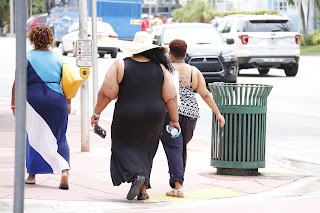Lose Weight With Portion
You can only lose weight by burning more calories than your body stores. Every single weight loss plan relies on this fact in one way or another. Burning calories through exercise is important, but we are going to focus on the other side of the equation. Not only can you lose weight with portion control, but you can also continue to eat the foods you love.
Restaurants are often guilty of serving huge portion sizes. In fact, once you understand what a standard portion is, you will be shocked at just how large some of the restaurant portions are. There is also a chance that you have been eating larger servings of food than you really need.
There may be a period of adjustment as you get used to controlling your portions, but you don't have to do it all at once. Just make an honest effort to get your serving sizes under control, and you will start to notice the results.
It's a good idea to invest in measuring utensils, such as cups, spoons, and a kitchen scale. This way there won't be any doubt as to how large or small of a serving you
are having. A good experiment is to serve up your food as you normally would, and then measure how much you, then compare that amount to what the standard serving is.
Almost all packaged foods will list the serving size on the label. Read the labels carefully so you know how many servings the package contains. Different foods will use different units per serving; some use weight, others use volume, and some use pieces. For example, a package of lunch meat may list a serving as one ounce by weight; a carton of ice cream would most likely list a serving as one-half cup by volume; and a bag of potato chips would list a serving as ten potato chips (though it may also note that ten chips equals one ounce).
If those examples seem small, then you have some idea of what real serving sizes are like. Each of those is a fairly common amount, but few people are aware of it. That's why it's so important to read labels if you're going to lose weight with portion control.
Of course it's not always possible to measure your food or read labels; in that case, you need a backup plan to keep your portions in check. A simple way to do this is to load up your plate with vegetables first, grains
second, and meat last. It's not a foolproof method, but it will help to make sure that you are getting a good balance of food while keeping your total caloric intake relatively low. A similar method is the 50-25-25 rule. All you do is fill 50% of your plate with vegetables, 25% with grains, and 25% with lean meat.
It's easy to control your portions with a little bit of awareness and practice. Make it a habit and your waistline will thank you.



Comments
Post a Comment